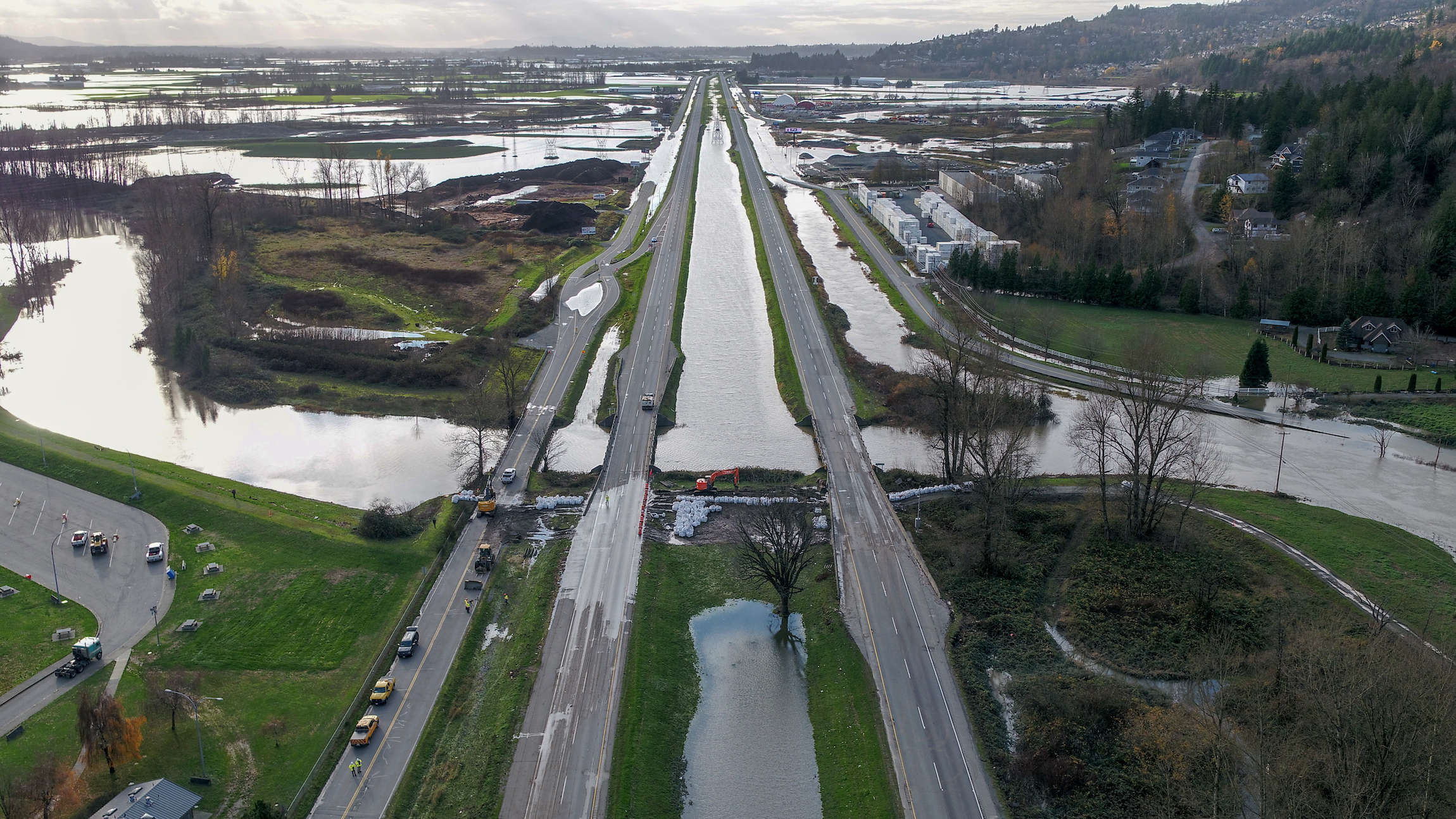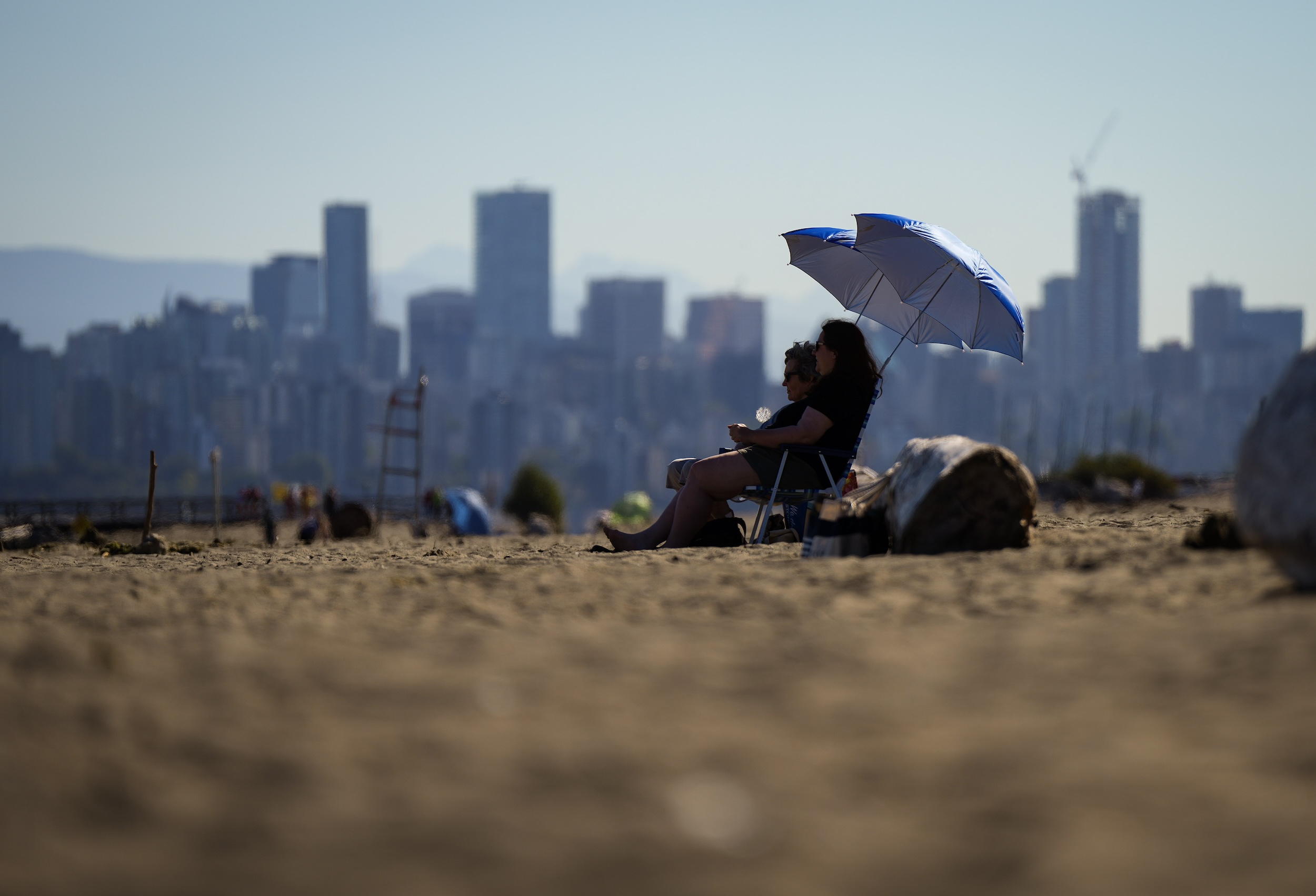
Hope for a huge, ancient and imperilled fish
First Nations are leading efforts to make sure lake sturgeon can find a home in...
Get the inside scoop on The Narwhal’s environment and climate reporting by signing up for our free newsletter.
When Hurricane Helene hit the U.S. southern Appalachia region in September, my social media feeds were inundated with photos of the devastation: crumbling roads, washed-out bridges, entire blocks of houses swept away. I grew up in rural Virginia, near communities hit hard by the storm. I’d never seen anything like Helene in the 20 years I lived in Appalachia or the 20 years since. It seemed impossible these remote mountain communities could be so vulnerable to a hurricane. But here was tangible evidence of what I already knew to be true: a changing climate meant a new scale of weather-related disaster and no community was invulnerable.
In the days that followed, another kind of story began to emerge online: one of neighbours helping neighbours. People were looking out for one another: sharing food, clearing debris, taking each other in. The tightly knit social fabric of these communities — the thing that made me want to run away to the anonymity of the city as a teenager — became the foundation of the recovery process.
I thought a lot about my life in Vancouver as I read these stories. Now, as an adult with two small kids, I long for more community in my life. I am lucky to have close friends in the city but I couldn’t tell you the names of more than three or four people who live in my building. I like my neighbourhood but I don’t feel especially connected to the people around me. Beyond my nuclear family, I’m not totally sure who I would turn to if disaster struck. When I’m in the elevator of my building, studiously avoiding eye contact with someone who lives down the hall, I wonder if they feel the same longing for connection.

In the past couple of years, the Metro Vancouver region has seen extreme rain and flash floods from atmospheric rivers, wind storms from bomb cyclones, heat waves, fires and even a tornado. As extreme weather becomes more common, I wonder if this infamously lonely city has the kind of social connections we need to support one another.
In her book A Paradise Built in Hell, Rebecca Solnit chronicles the many ways people come together after disaster. She argues that, despite the very real trauma of these events, disasters often create a renewed sense of solidarity. People turn toward one another and take charge of their communities in ways that are generous, resourceful and imaginative. “Disasters provide an extraordinary window into social desire and possibility,” Solnit writes, “and what is seen there matters elsewhere, in ordinary times.”
It’s hard to feel like these are ordinary times, given we know extreme weather events are only going to increase in the years to come. But Hurricane Helene does offer a visceral lesson in “social desire and possibility.” I think about the lesson this way: the loneliness I sometimes feel in my apartment building is really a longing for a different kind of urban life — one where we acknowledge that we need one another, because, as it turns out, we do.
This need isn’t theoretical. The heat dome in June 2021 killed a staggering 619 people in B.C. alone. The majority of those who died lived in the Metro Vancouver area. More than half lived alone and many lived in what researchers call socially deprived neighbourhoods: places characterized by fewer close social connections. In many ways, these deaths are a product of two overlapping crises: extreme weather brought on by climate change and high levels of social isolation.
It is easy to feel overwhelmed by the sense that we are facing not two but many overlapping crises right now: problems that are environmental, social, political and economic. Historians have a term for these times: polycrisis. But they are also moments when immense change is possible.
A statistic I frequently come across in climate writing is that 75 per cent of the infrastructure we’ll use in 2050 has yet to be built. This number is often cited to inspire designers, urban planners and policy makers to dream big about building communities that are more just and more resilient in the face of a changing climate. Rethinking our roads, transit systems, green spaces and energy grids is essential. But, in this moment of flux, we also have the opportunity to build a more robust and resilient social infrastructure.
With Hurricane Helene, we saw how an entire region’s physical infrastructure can be destroyed in a day. But social infrastructure is far more durable — and arguably more critical. Instead of waiting for a disaster to renew our sense of solidarity and interdependence, we would benefit from considering how to create that shared sense of community and belonging now.
To figure out exactly how this might work, I spoke to Stacy Barter, executive director of the non-profit Building Resilient Neighbourhoods and co-director of the Hey Neighbour Collective, two organizations devoted to creating social connection in British Columbia.
Barter said over the course of her career in community development, one question continually puzzled her: “Why, when things get hard, do some communities respond proactively while others really struggle?”
She and her colleagues began investigating and found community resilience often came down to relationships at the level of a single city block or apartment building. “Your neighbours are your first responders,” she explained. “We need to know folks right next door.”
In 2018, Barter and her colleagues launched the Connect and Prepare program in collaboration with the City of Victoria. Since then, it’s been piloted in Vancouver, New Westminster and North Vancouver. The program uses facilitators to bring neighbours together with the goal of creating emergency preparedness plans. The program is designed to work at the intersection of increasing climate pressures and increasing social isolation.
In many ways, Barter sees the two issues as fundamentally inseparable: social connection boosts our resilience, and the act of preparing for crises deepens our sense of community and connection. Participants typically come out of the process with projects and action plans in place. But, Barter said, “it is the process of actually coming together and building those relationships that makes the big difference.” People meet their neighbours and start looking out for one another in small ways. They start to feel a sense of shared responsibility for their collective well-being.
Michelle Hoar, who directs the Hey Neighbour Collective with Barter, cites Connect and Prepare as an example of multi-solving, explaining that in times of polycrisis we need solutions that solve multiple problems at once. Another example, she explained, is designing an apartment building with a shared central courtyard; it provides better temperature regulation in extreme heat and it creates a shared social space where neighbours can see and connect with one another. Both Barter and Hoar agree small interventions like these can have surprisingly significant impacts, but figuring out how to create social infrastructure on a broader scale is a more complicated question.
In a city like Vancouver, which struggles with both affordability and a dearth of housing supply, it can be difficult for residents to feel settled. Making the time and energy to invest in your neighbours is hardly going to be a priority when you’re struggling to pay rent. Creating a durable sense of connection — especially among the region’s most vulnerable — requires policies that can substantially improve the cost and availability of housing.
This is where Hey Neighbour’s collective impact model comes in. They work to connect multiple partners with the shared goals of building community and social connectedness, especially in multi-unit housing where neighbours are the least likely to know and look out for one another. They bring local and regional governments together with housing providers, researchers and health authorities. “Our partners work on different parts of the problems in different ways,” Hoar explains. This kind of comprehensive approach can help mitigate some of the fragmentation that often exists between different interest groups.
Ultimately, building social connection requires a culture change: one where we shift the norms that put privacy and self-reliance above collaboration and interdependence. This may be the piece of the social connection puzzle that takes the longest to solve. Despite my own longing for community, I can sense an internal resistance to turning toward others and asking for help.

When the heat dome struck in 2021, I was five months into a high-risk twin pregnancy. I’d seen the warnings about extreme heat and pregnancy, but I assumed I would be able to tough it out. Eventually, though, the thermometer in our apartment climbed to 34 C, and I felt a level of exhaustion I’d never before experienced. I gave in and texted a friend to see if I could come over and lie on the couch in her basement, which was a few degrees cooler. I still think fondly of that long nap in a (relatively) cool, dark room. Now I wonder: why was I so reluctant to send that text? And what would it take to make asking for help easier?
This kind of culture change feels daunting to me, but Barter disagrees. She believes it’s easier to shift our norms than we think. Sometimes all it takes is a few people behaving differently: that sense of warmth and connection can ripple outward and change an entire community.
The biggest challenge to programs like Connect and Prepare might be funding. Both Hoar and Barter point out that social connection has long been thought of as something that is nice to have, but not urgent. But a dawning awareness of the health impacts of extreme weather is starting to shift our priorities. Barter explains that, when it comes to social infrastructure, scaling means thinking both up and deep: “Part of what I’d like to see more of is institutions recognizing the importance of ensuring that there is support down to that micro-micro scale.” This means funding those building or block-level interventions while also shifting policy.
Barter says part of the value of a program like Connect and Prepare is that it functions as a kind of Trojan horse to legitimize asking for and accepting help: “We’re naming that community matters and that we’re thinking as a collective, not just our individual households.” It gives people a reason to knock on their neighbours’ doors, to share their vulnerabilities, and to see their collective strengths.
It may be this sense of ourselves as part of a collective that matters most going forward. Climate change is, after all, a collective problem — one that can’t possibly be solved by individual solutions. Our relationships offer an essential sense of belonging — to our communities and to the world around us — and, within that belonging, a sense of possibility that, despite everything, the future can be a place we want to live, a place we can build together.
Get the inside scoop on The Narwhal’s environment and climate reporting by signing up for our free newsletter. Angello Johnson’s shoulders burn, and his arms...
Continue reading
First Nations are leading efforts to make sure lake sturgeon can find a home in...

We’re excited to share that an investigation by The Narwhal is a finalist for the...

A new documentary, Nechako: It Will Be a Big River Again, dives into how two...
